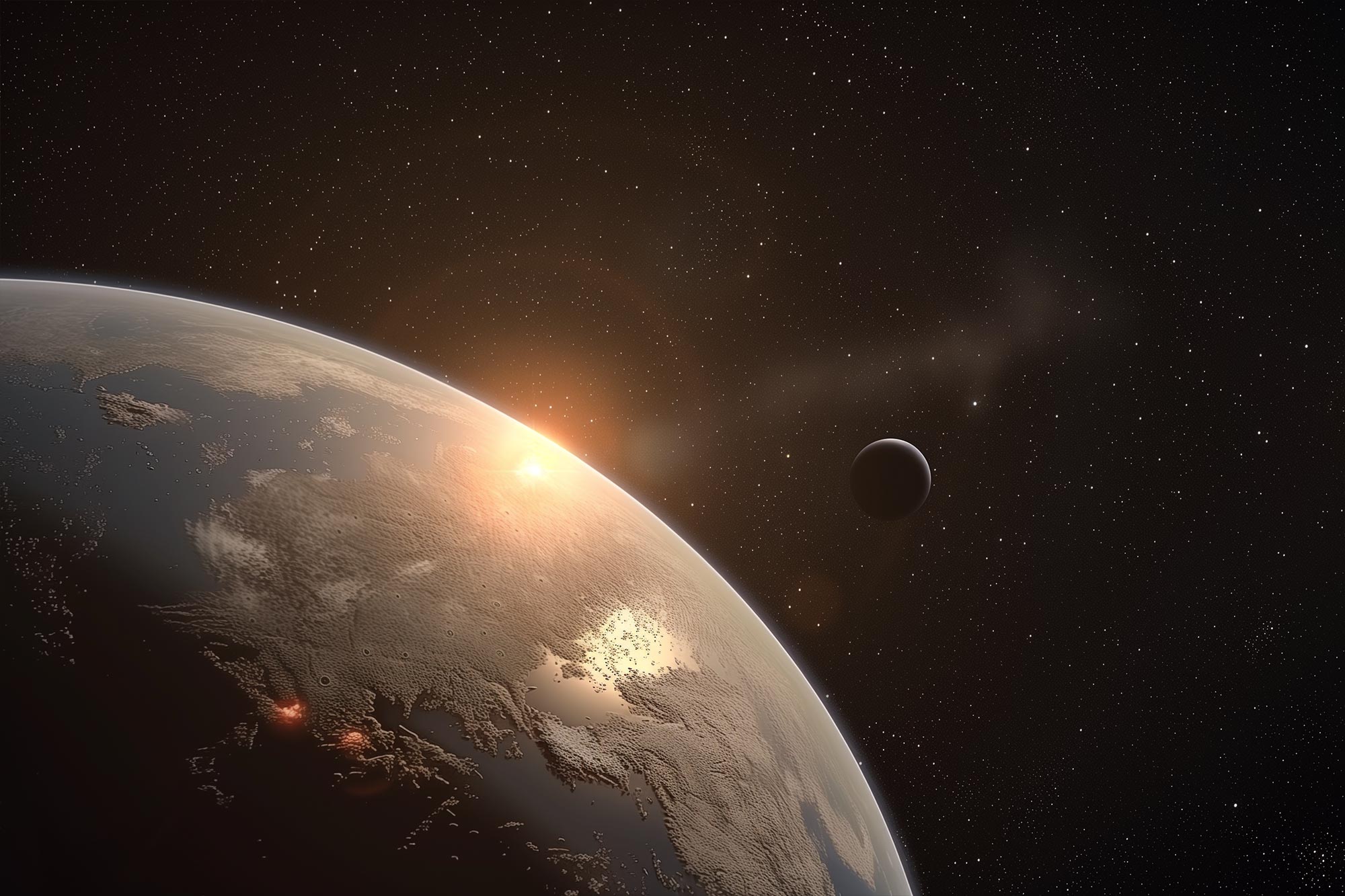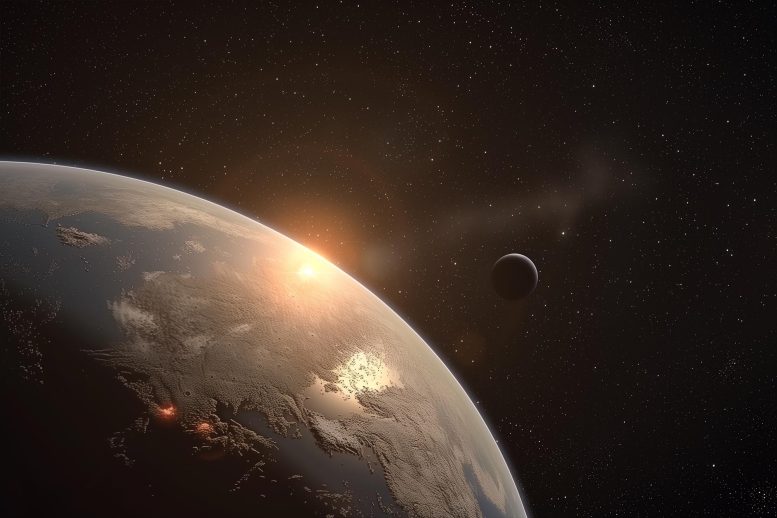

Research indicates that the James Webb Space Telescope could help confirm the presence of life-supporting atmospheres on exoplanets in the “Goldilocks zone,” enhancing the likelihood of discovering extraterrestrial life.
Since its launch in late 2021, NASA’s James Webb Space Telescope has opened up new possibilities for detecting signs of life on exoplanets—planets located outside our solar system.
The most promising candidates in this search are rocky planets, as opposed to gaseous ones, that orbit low-mass stars known as M-dwarfs. These stars are the most common type in the universe. One nearby M-dwarf, TRAPPIST-1, is about 40 light-years away and has a system of planets that are being closely studied for their potential to support life.
Previous studies raised doubts about the habitability of TRAPPIST-1’s planets. Researchers found that intense UV radiation from the star could burn away the planets’ surface water, leaving them dry and possibly filled with reactive oxygen, which could prevent life from forming.
New Research Sheds Light on Exoplanet Atmospheres
However, a new study led by the University of Washington, published in Nature Communications, suggests that a series of processes in the evolution of certain rocky planets orbiting M-dwarfs could lead to the formation of a stable atmosphere over time.
“One of the most intriguing questions right now in exoplanet astronomy is: Can rocky planets orbiting M-dwarf stars maintain atmospheres that could support life?” said lead author Joshua Krissansen-Totton, a UW assistant professor of Earth and space sciences. “Our findings give reason to expect that some of these planets do have atmospheres, which significantly enhances the chances that these common planetary systems could support life.”
The James Webb Space Telescope is sensitive enough that it can observe a select few of these planetary systems. Data coming back so far suggests that the hottest rocky planets, closest to the TRAPPIST-1 star, do lack significant atmospheres. But the telescope has not yet been able to clearly characterize planets in the “Goldilocks zone,” slightly farther from their star, at a distance most favorable to supporting liquid water and life.
Stability and Habitability of Exoplanetary Atmospheres
The new study modeled a rocky planet through the course of its molten formation and cooling over hundreds of millions of years into a solid terrestrial planet. Results showed that hydrogen or other light gases did initially escape into outer space. But for planets farther away from the star, where the temperature is more moderate, hydrogen also reacted with oxygen and iron in the planet’s interior. This produced water and other, heavier, gases, forming an atmosphere that results show is stable over time.
Results also showed that for these “Goldilocks zone” planets, water rains out of the atmosphere fairly quickly, making the water less likely to escape.
The Importance of Observational Continuity
“It’s easier for the JWST to observe hotter planets closest to the star because they emit more thermal radiation, which isn’t as affected by the interference from the star. For those planets we have a fairly unambiguous answer: They don’t have a thick atmosphere,” Krissansen-Totton said. “For me, this result is interesting because it suggests that the more temperate planets may have atmospheres and ought to be carefully scrutinized with telescopes, especially given their habitability potential.”
The JWST has not yet been able to see whether the planets a little farther from the TRAPPIST-1 star have atmospheres. But if they do, that means they could have surface liquid water and a temperate climate conducive to life.
“With the telescopes that we have now, the James Webb and the extremely large ground-based telescopes coming soon, we’re really only going to be able to look at a very small number of habitable zone rocky planets’ atmospheres — it’s the TRAPPIST-1 planets and a couple of others,” Krissansen-Totton said. “Given the huge interest in the search for life elsewhere, our result suggests that it’s worthwhile investing telescope time to continue studying the habitability of these systems with the technology we have now, rather than waiting for the next generation of more powerful telescopes.”
Reference: “The erosion of large primary atmospheres typically leaves behind substantial secondary atmospheres on temperate rocky planets” by Joshua Krissansen-Totton, Nicholas Wogan, Maggie Thompson and Jonathan J. Fortney, 27 September 2024, Nature Communications.
DOI: 10.1038/s41467-024-52642-6
Co-authors are Nicholas Wogan, who did this work as a UW graduate student and is now at NASA; Maggie Thompson at Carnegie Institution for Science in Washington, D.C.; and Jonathan Fortney at the University of California, Santa Cruz. This research was supported by NASA.